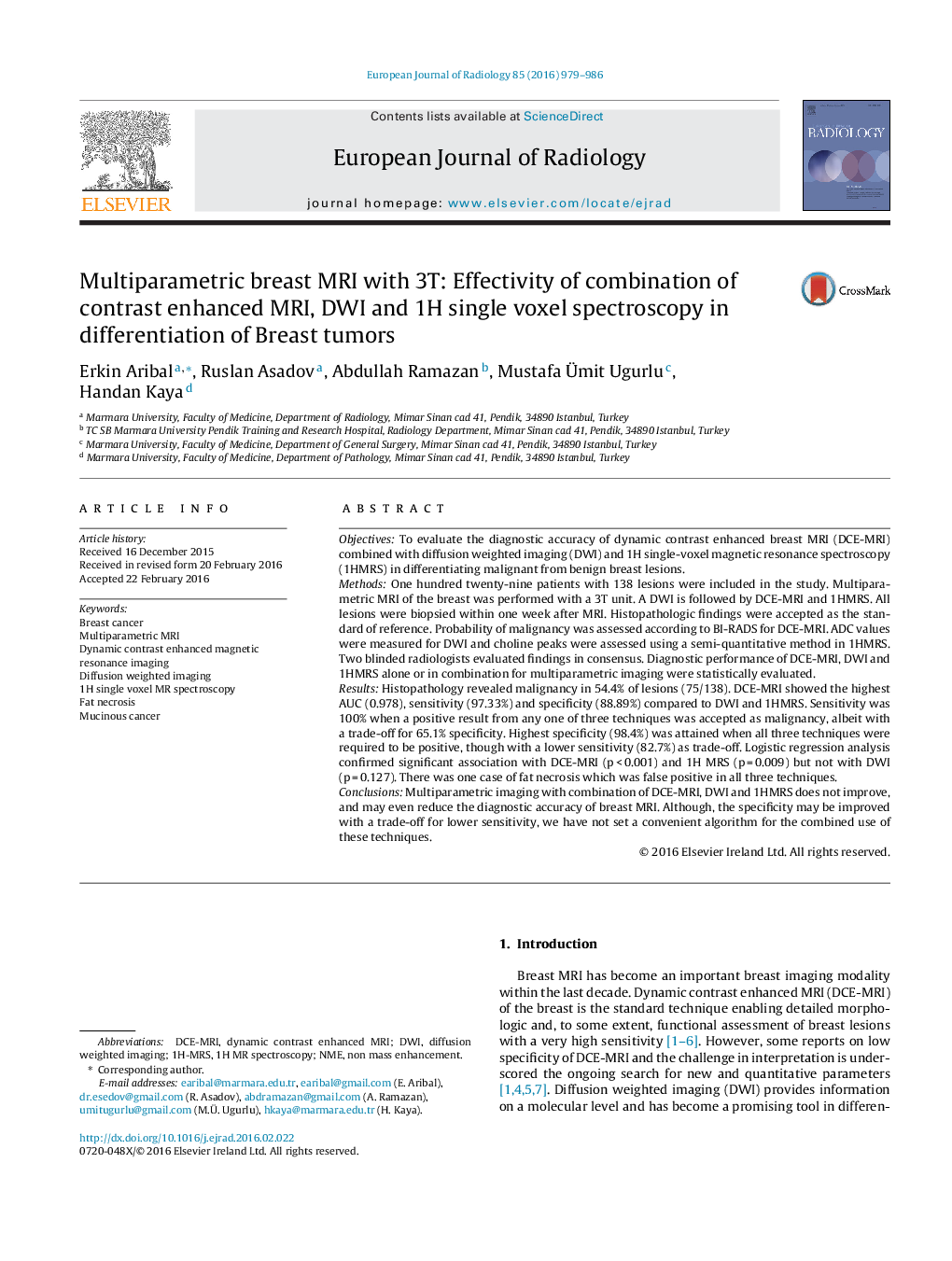| Article ID | Journal | Published Year | Pages | File Type |
|---|---|---|---|---|
| 4224980 | European Journal of Radiology | 2016 | 8 Pages |
•Multiparametric MR imaging of breast provides more data with combination of dynamic contrast enhanced MRI, diffusion weighted imaging and 1H MR spectroscopy.•Fat necrosis may show malignant features in all three techniques.•Mucinous cancers may show negative findings in dynamic contrast enhanced MR and diffusion weighted imaging but high choline peak on spectroscopy.•Multiparametric imaging can increase the specificity of breast MRI with a trade off for sensitivity.
ObjectivesTo evaluate the diagnostic accuracy of dynamic contrast enhanced breast MRI (DCE-MRI) combined with diffusion weighted imaging (DWI) and 1H single-voxel magnetic resonance spectroscopy (1HMRS) in differentiating malignant from benign breast lesions.MethodsOne hundred twenty-nine patients with 138 lesions were included in the study. Multiparametric MRI of the breast was performed with a 3T unit. A DWI is followed by DCE-MRI and 1HMRS. All lesions were biopsied within one week after MRI. Histopathologic findings were accepted as the standard of reference. Probability of malignancy was assessed according to BI-RADS for DCE-MRI. ADC values were measured for DWI and choline peaks were assessed using a semi-quantitative method in 1HMRS. Two blinded radiologists evaluated findings in consensus. Diagnostic performance of DCE-MRI, DWI and 1HMRS alone or in combination for multiparametric imaging were statistically evaluated.ResultsHistopathology revealed malignancy in 54.4% of lesions (75/138). DCE-MRI showed the highest AUC (0.978), sensitivity (97.33%) and specificity (88.89%) compared to DWI and 1HMRS. Sensitivity was 100% when a positive result from any one of three techniques was accepted as malignancy, albeit with a trade-off for 65.1% specificity. Highest specificity (98.4%) was attained when all three techniques were required to be positive, though with a lower sensitivity (82.7%) as trade-off. Logistic regression analysis confirmed significant association with DCE-MRI (p < 0.001) and 1H MRS (p = 0.009) but not with DWI (p = 0.127). There was one case of fat necrosis which was false positive in all three techniques.ConclusionsMultiparametric imaging with combination of DCE-MRI, DWI and 1HMRS does not improve, and may even reduce the diagnostic accuracy of breast MRI. Although, the specificity may be improved with a trade-off for lower sensitivity, we have not set a convenient algorithm for the combined use of these techniques.
